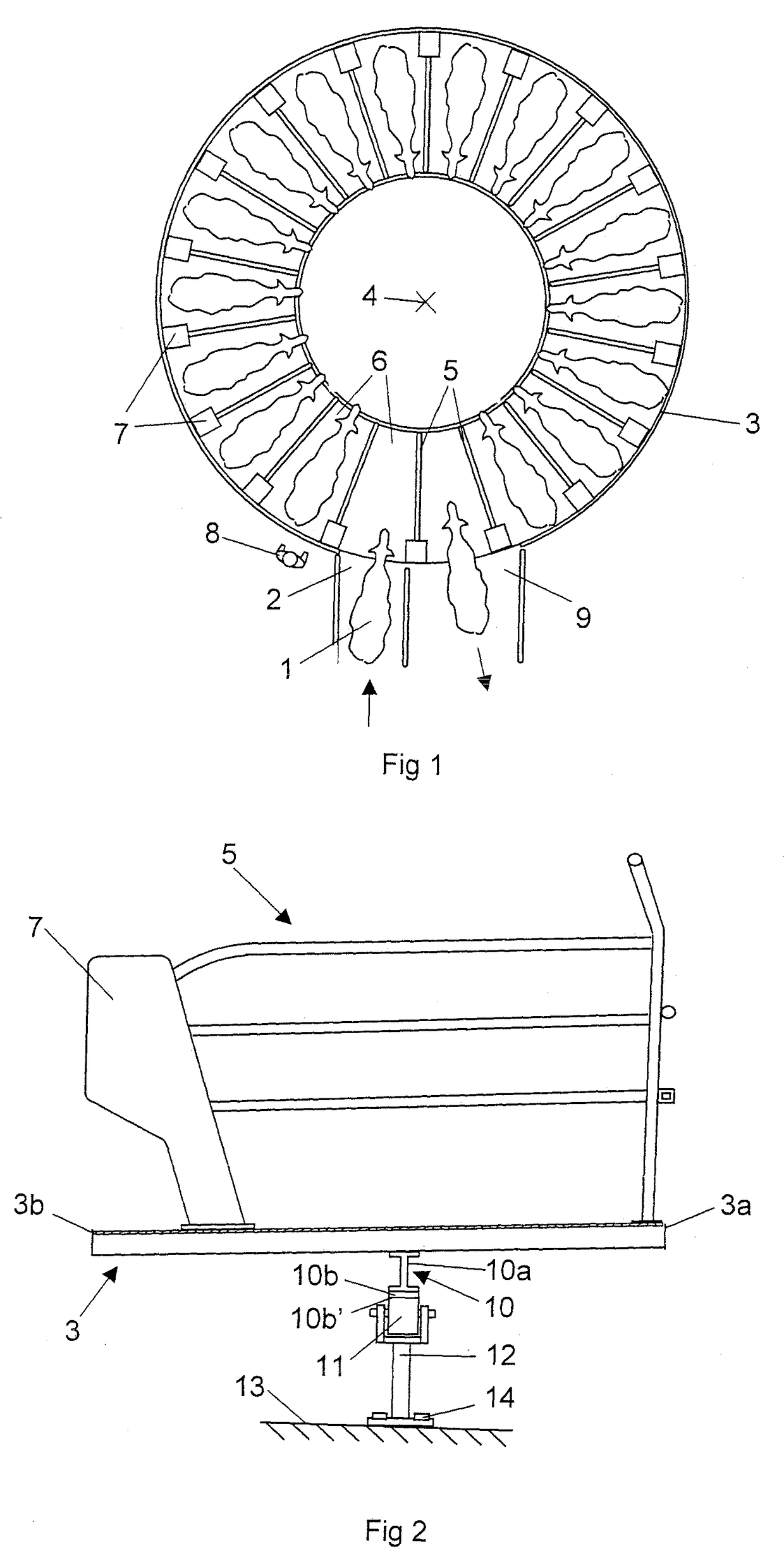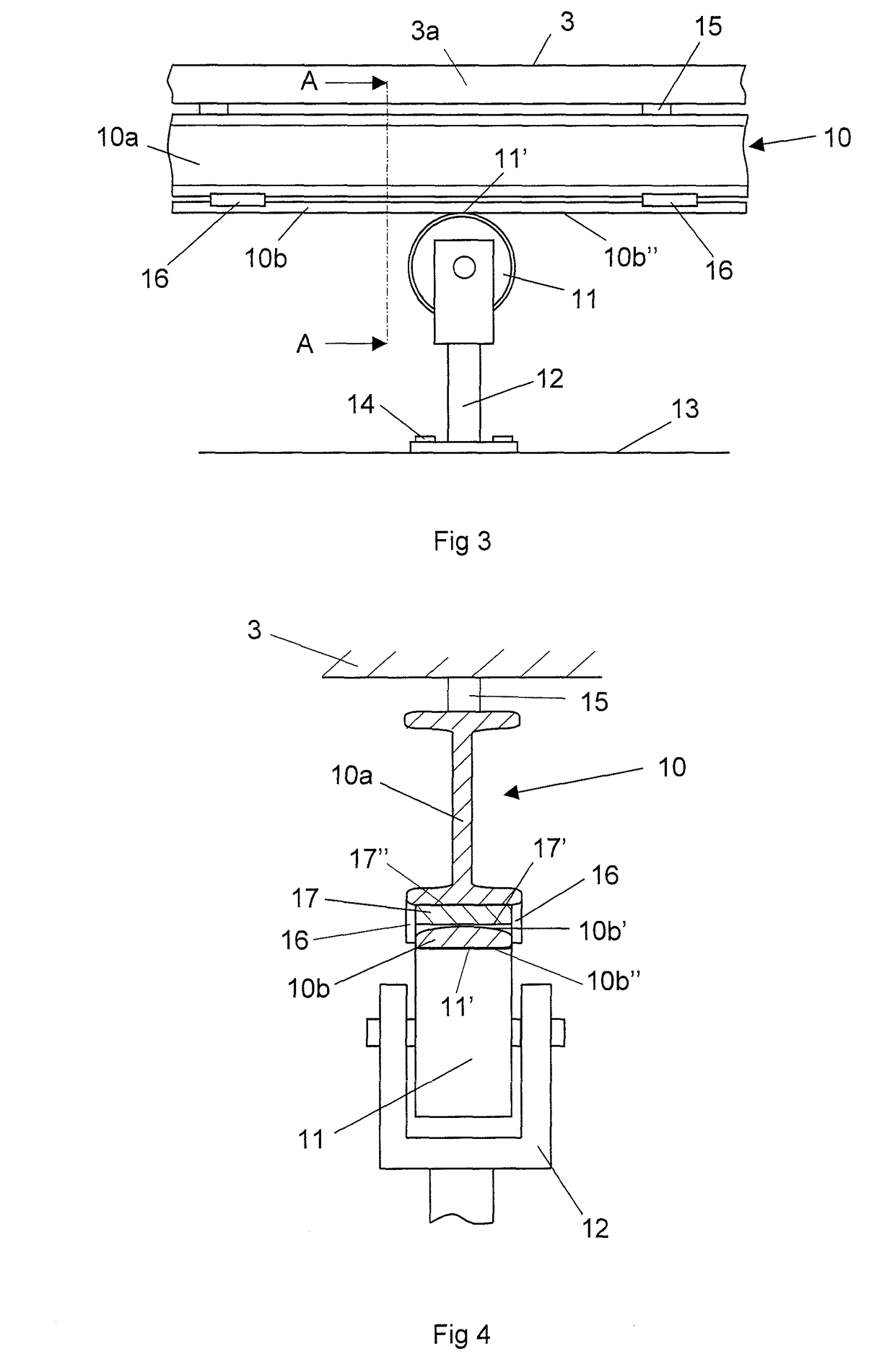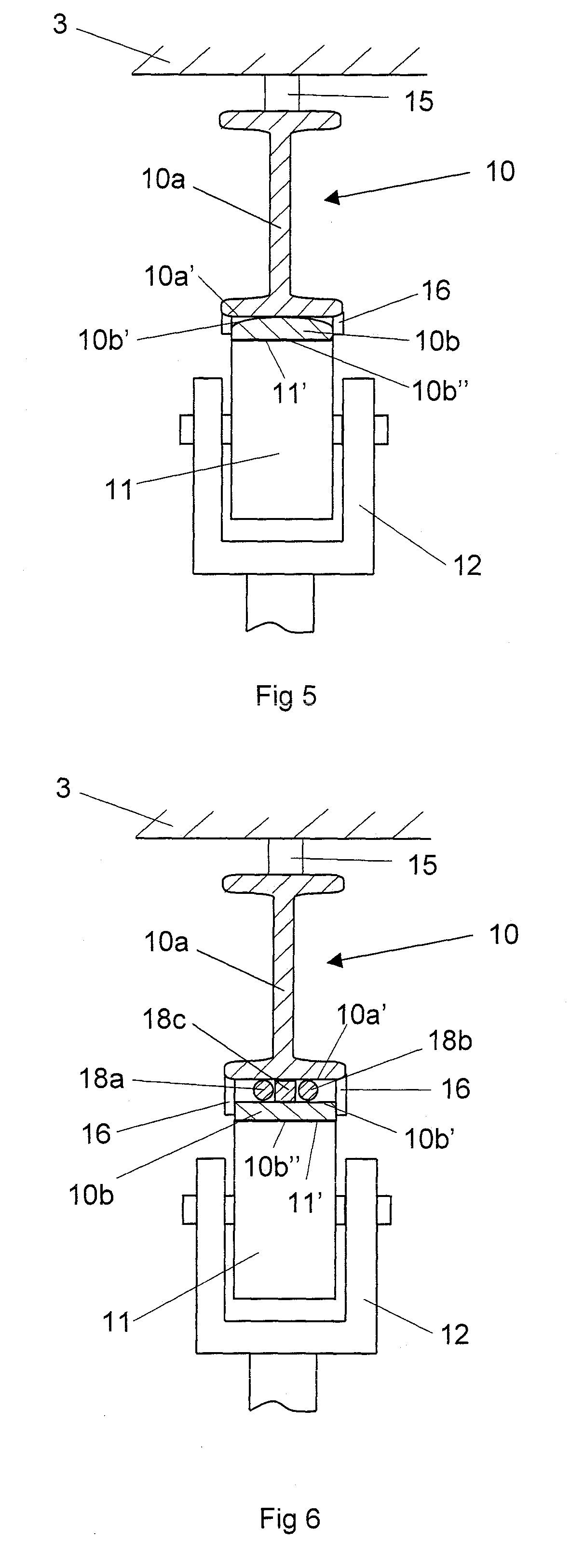Rotary parlour for milking of animals
a technology of parlour and animal, which is applied in the direction of milking devices, shafts and bearings, construction, etc., can solve the problems of wear surfaces having a longer working life, and achieve the effect of simple manner and longer working li
- Summary
- Abstract
- Description
- Claims
- Application Information
AI Technical Summary
Benefits of technology
Problems solved by technology
Method used
Image
Examples
Embodiment Construction
[0020]FIG. 1 shows a rotary parlour for milking of cows 1. The cows 1 to be milked walks through an entry 2 to enter an annular platform 3. The platform 3 is rotatably arranged around a substantially vertical axis 4. A plurality of fence arrangements 5 are mounted on the platform, which divide the platform 3 into stalls 6 for receiving individual cows 1. In this case, the fence arrangements 5 have a substantially radial extension on the platform 3 in relation to the vertical axis 4. Cabinets 7 are arranged at an outer radial position of the platform 3. In this case, the cabinets 7 constitute a supporting element of the fence arrangements 5. Each cabinet 7 has an inner space, which may accommodate milking equipment and other components in the stall 6. In this case, the stalls 6 are arranged such that the cows face inwards from the stalls 6 and operators 8 work from the outside of the annular platform 3. An operator 8 may, for example, attach milking members to the cows 1 when they ha...
PUM
 Login to View More
Login to View More Abstract
Description
Claims
Application Information
 Login to View More
Login to View More - R&D
- Intellectual Property
- Life Sciences
- Materials
- Tech Scout
- Unparalleled Data Quality
- Higher Quality Content
- 60% Fewer Hallucinations
Browse by: Latest US Patents, China's latest patents, Technical Efficacy Thesaurus, Application Domain, Technology Topic, Popular Technical Reports.
© 2025 PatSnap. All rights reserved.Legal|Privacy policy|Modern Slavery Act Transparency Statement|Sitemap|About US| Contact US: help@patsnap.com



